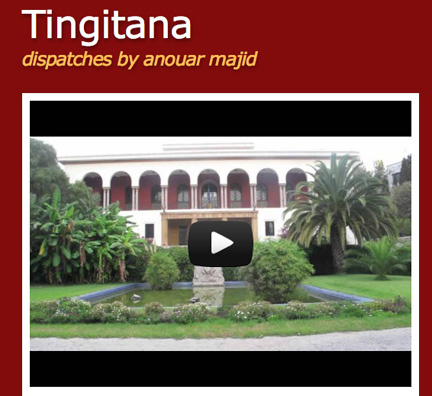
Anouar Majid provides a short video of scenes from Tangier today. Check it out at Youtube.
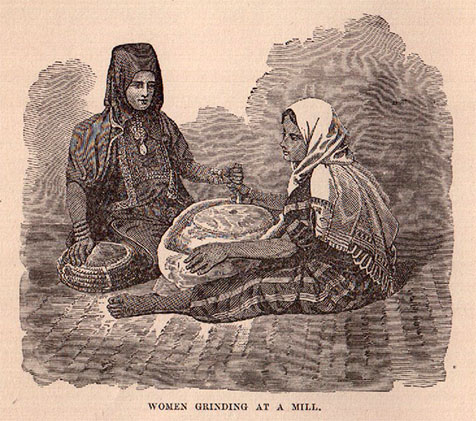
In a previous post I continued a thread on a 19th century Bible Lands text by Rev. Frank S. DeHaas. Here is the final entry, this time just for enjoying the illustrations…
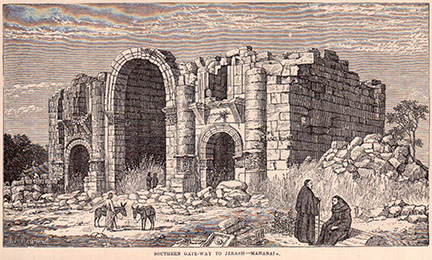
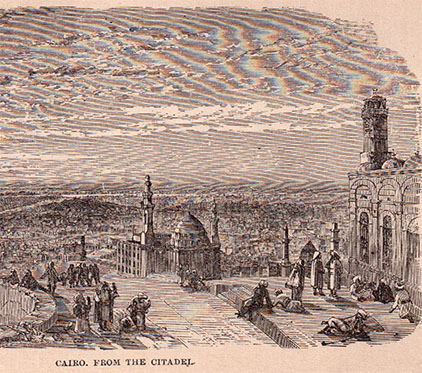
In a previous post I continued a thread on a 19th century Bible Lands text by Rev. Frank S. DeHaas. Now it is on to a description of Egypt around 1880…

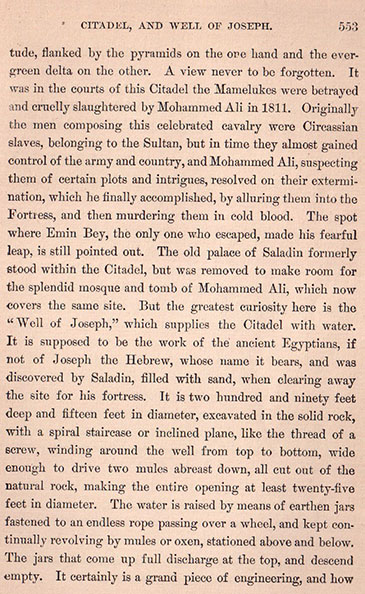
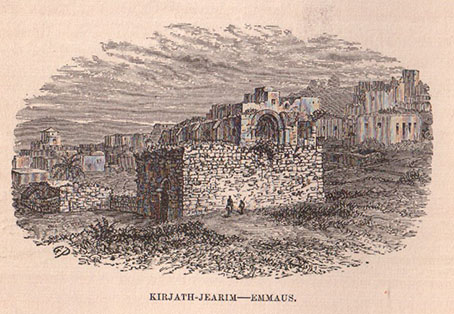
In a previous post I continued a thread on a 19th century Bible Lands text by Rev. Frank S. DeHaas. His account covers Egypt and Palestine. He entered Palestine at the port of Jaffa and discusses his disembarking, which he compares to the turmoil surrounding Jonah on the same sea, in the following passage. But it seems the crowded streets of Jaffa did not inspire the kind of reverence he wanted from traversing on holy ground. So he was quite glad to be out and out where the patriarchs trekked…
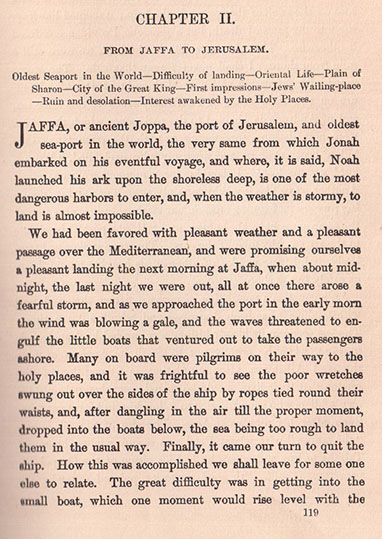
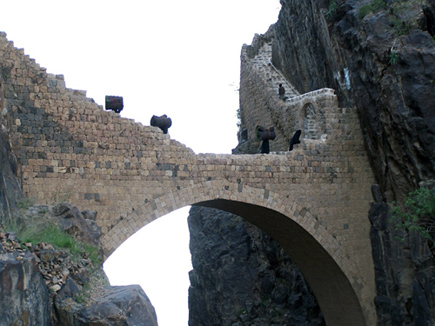
Among the architectural marvels of highland Yemen is the breathtaking bridge at Shahara. For more pictures of the bridge, click here and here.
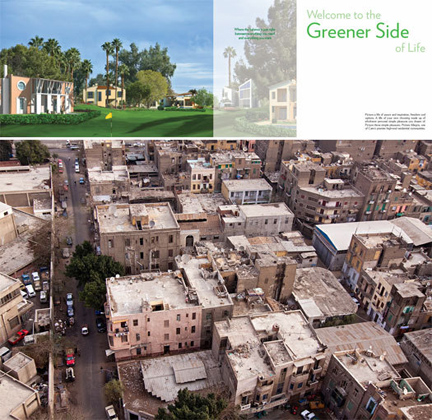
Top: Promotional image for Allegria, a gated community in Sheikh Zayed City, a suburb of Cairo, Egypt. [Image by SODIC] Bottom: Neighborhood in Cairo. [Photo by Brandon Atkinson]
by Karen Piper, The Design Observer Group, July 12, 2012
“Welcome to the Greener Side of Life” beckoned the billboard on Cairo’s Ring Road, which showed a man in a jaunty hat teeing off on a verdant golf course flowing into the horizon. I was stuck in traffic, breathing that mix of Saharan dust and pollution also known as “air,†so I could see the appeal. Somewhere outside the city, in a gated community called Allegria — Italian for “cheerfulness†— a greener life awaited. “Over 80% of Allegria’s land is dedicated to green and public spaces,” boasts the developer’s brochure, “meaning you’ll never lose the peace and tranquility which goes hand in hand with outdoor living.â€
It was a scorching hot summer, several months before the Egyptian revolution. Beneath the expressway sprawled the informal settlements where an estimated 60 percent of metropolitan Cairo’s 18 million residents live. [1] Some were using billboard poles to keep the brick structures from collapsing. Many did not have running water, and those who did found the taps drying up as water was diverted to the lavishly landscaped suburban developments with names like Allegria, Dreamland, Beverly Hills, Swan Lake, Utopia — a diversion that was straining the capacity of state-run water distribution networks and waste treatment plants. [2] Continue reading Revolution of the Thirsty

http://www.free-syria.com/
The constant news about fighting and violence in Yemen obscures the extraordinary beauty in the country. Here is a short video with spectacular views, the pristine nature being sold somewhat soiled by the appearance of tourists. If you ignore this aspect, especially the rather distorted account of tourism amenities, it is worth watching.
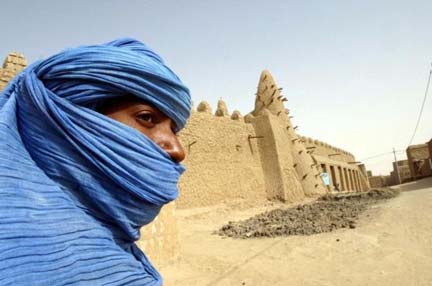
A Tuareg nomad stands near a 13th century mosque in Timbuktu in this file photo [Reuters]
There is an old saw in English: cutting your nose to spite your face. The sorry lot of vigilante Ansar extremists have already desecrated several Muslim saints’ tombs in southern Yemen, but now come reports of lawless fanatics destroying saint shrines in the famed city of Timbuktu in Mali. Al Jazeera is reporting that many, if not all, of the shrines there on the World Heritage List have been damaged or destroyed. These are ritual attractions considered sacred by local Muslims for several centuries, not replicas of the Buddha or foreign idols. So who exactly do these fanatics hate? If you think they are doing this because they hate America and its freedoms, think again.
Iconoclasm has a long history that is hardly unique to the Middle East. The modus vivendi is the idea that if you don’t like something, just get rid of it no matter what other people think. Tolerance and dialogue might as well be Satanic in this twisted worldview. It is important to observe that in both the Yemeni case and now in Timbuktu the destruction takes place because of an almost total breakdown of security. No government, responsible or not to world opinion, is behind this action to such a sacred Islamic site. It is very much a replay of the Wahhabi wave that swept across Arabia with the sword of the Sa’ud clan. The Wahhabis, considered fanatics at the time by most other Muslims, wanted to turn back the clock to a narrow understanding of what they thought life was like in the time of the Prophet. Were ‘Abd al-Wahhab, who died in 1792 (just six years before Napoleon invaded Egypt and proclaimed himself a true Muslim come to rescue Egypt from its corrupt rulers) to come back from the dead and see the palaces, shopping malls and gentrification of the ka‘ba as these have evolved with the vast oil wealth of the Saudi elite, he would no doubt follow Balaam and curse the day he ever met Ibn Sa’ud.
Timbuktu, as a major African center of Islamic education, is also a rich treasury of Islamic manuscripts. Will these fanatics torch the handwritten copies of the Qu’ran, traditions and other religious books in the libraries? ‘Abd al-Wahhab is not about to be resurrected, but there is a need for a modern day Muslim Balaam to get off his ass and curse such sacrilege.